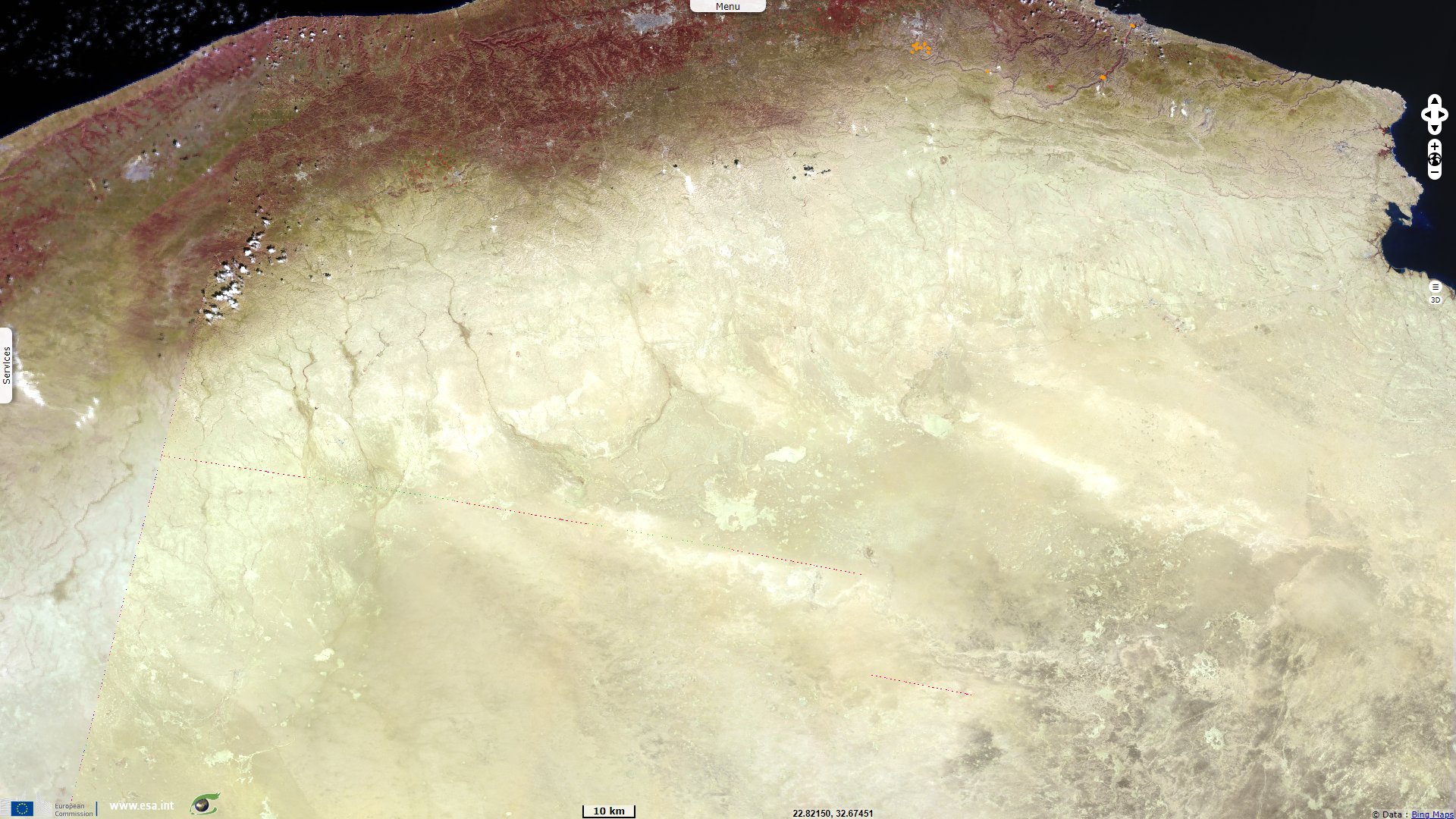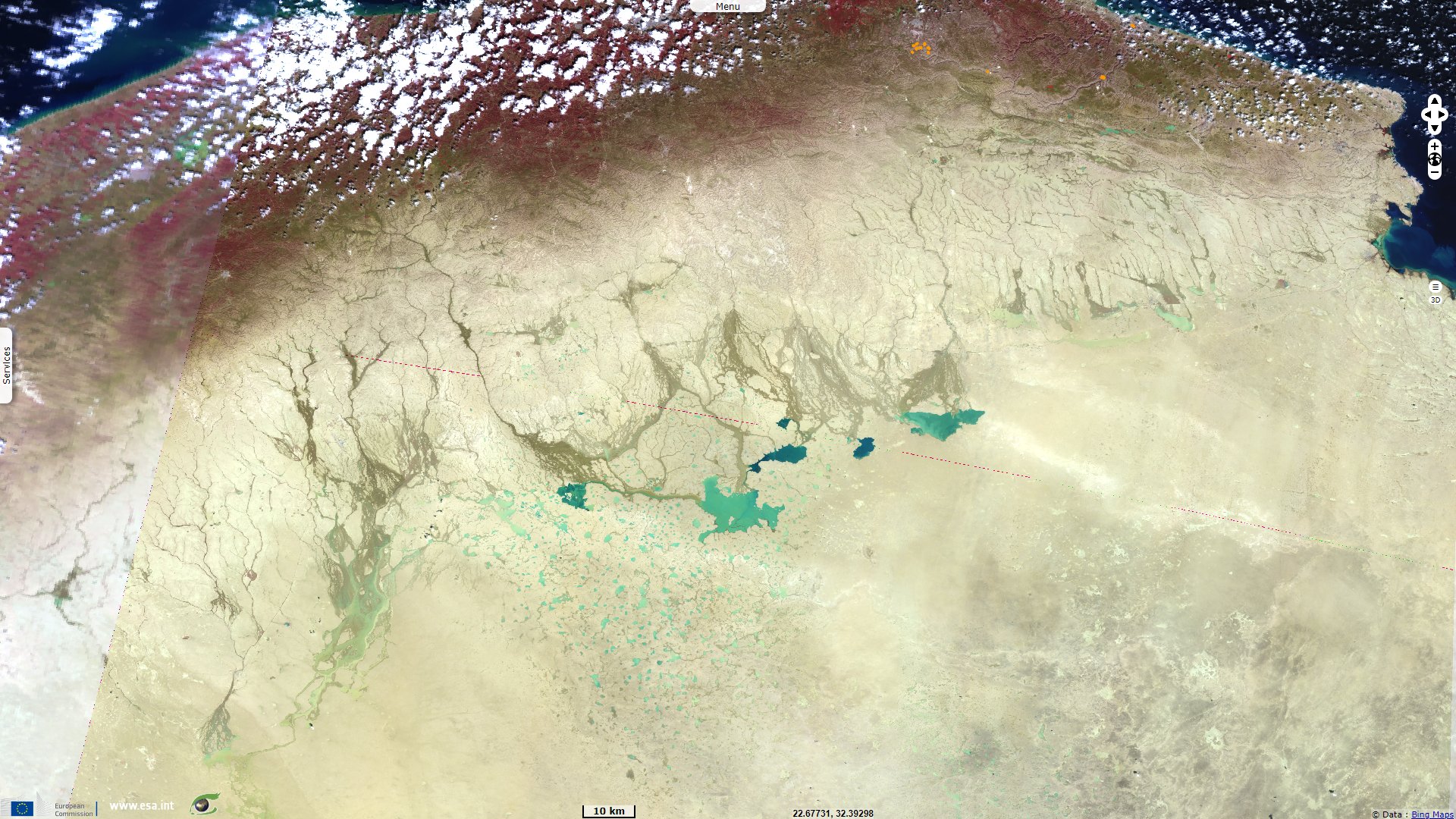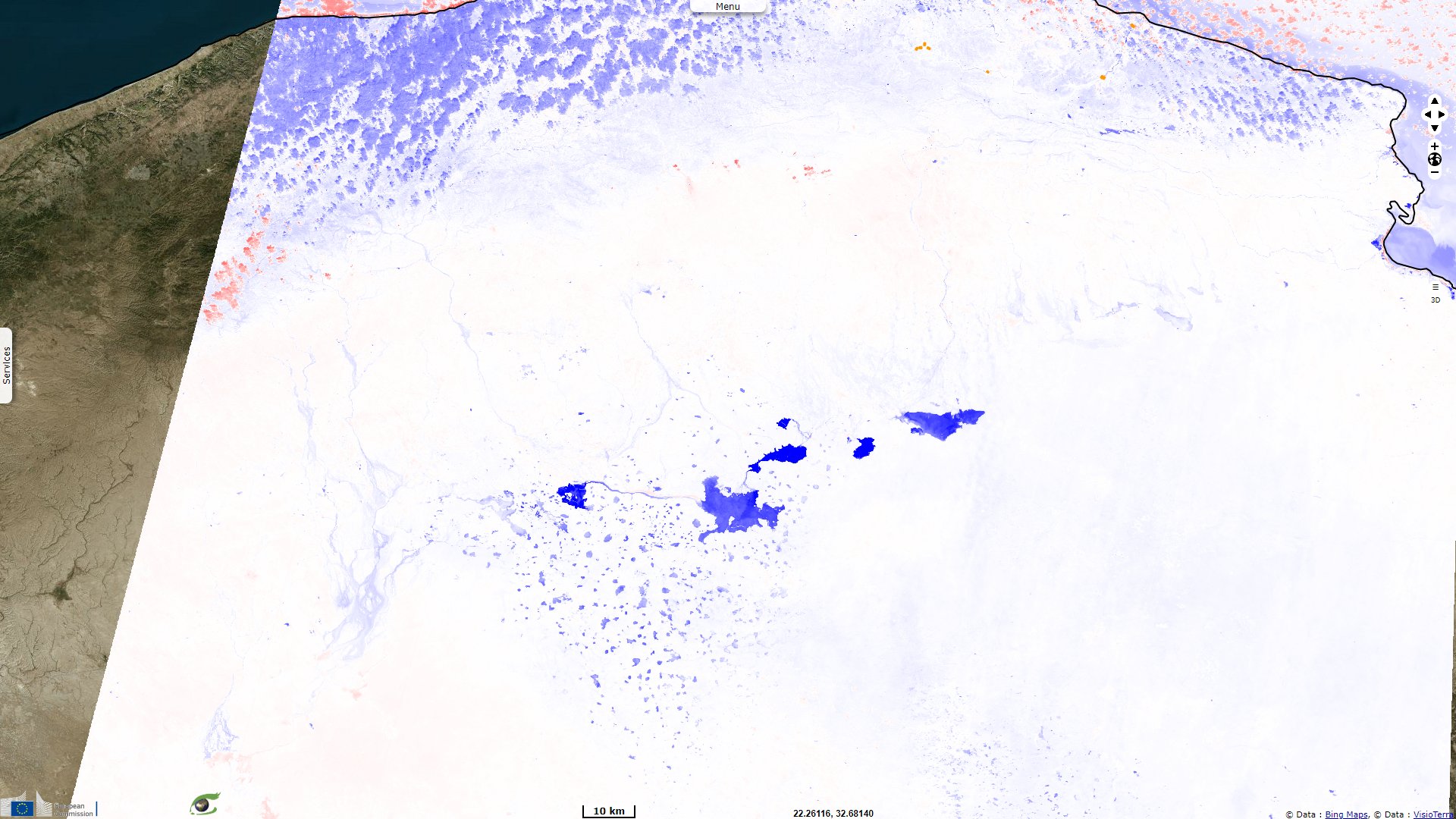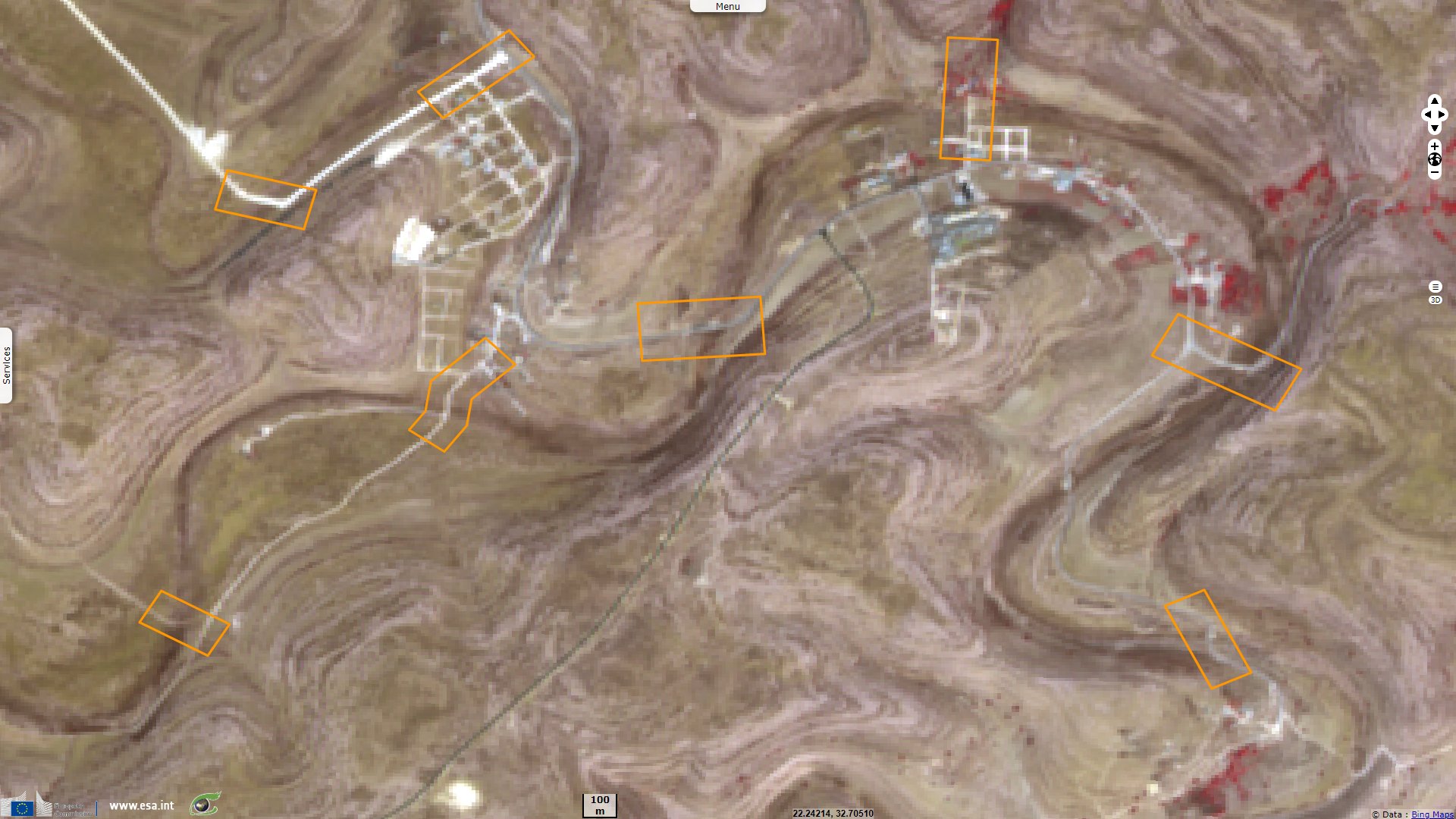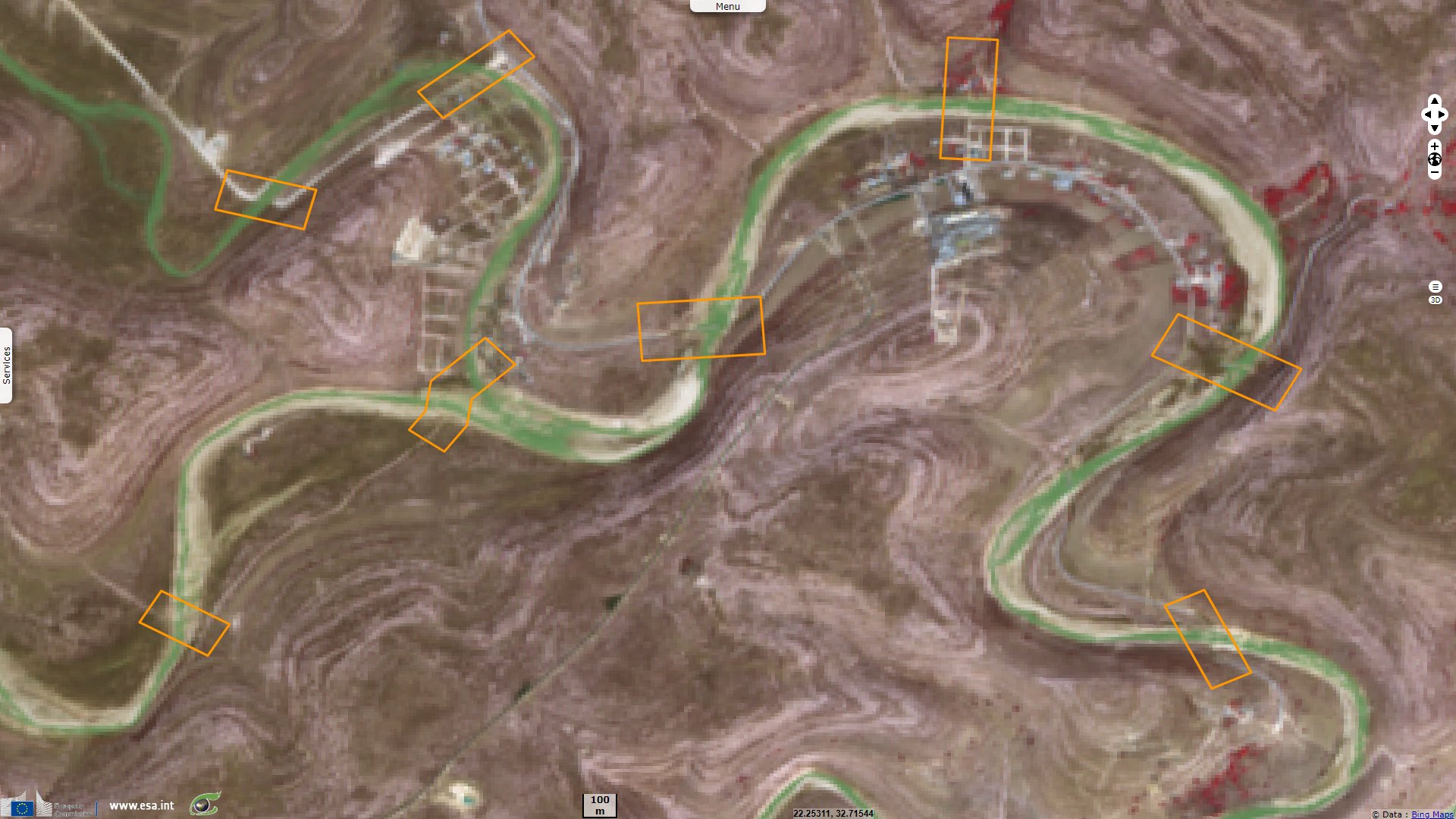Dam bursts cause catastrophic loss of life in Derna, eastern Libya
Sentinel-1 CSAR IW acquired on 01 September 2023 from 04:33:37 to 04:34:02 UTC
Sentinel-2 MSI acquired on 02 September 2023 at 09:06:01 UTC
...
Sentinel-2 MSI acquired on 12 September 2023 at 09:06:01 UTC
Sentinel-1 CSAR IW acquired on 13 September 2023 from 04:33:37 to 04:34:02 UTC
Sentinel-2 MSI acquired on 02 September 2023 at 09:06:01 UTC
...
Sentinel-2 MSI acquired on 12 September 2023 at 09:06:01 UTC
Sentinel-1 CSAR IW acquired on 13 September 2023 from 04:33:37 to 04:34:02 UTC
Keyword(s): Natural disaster, emergency, dam, hydrology, rainfall, precipitation, hurricane, medicane, urban planning, infrastructure, Libya, Mediterranean Sea
"Heavy rains due to Mediterranean storm Daniel caused deadly flooding across eastern Libya last week. Derna officials had warned the public about the coming storm and ordered residents to evacuate coastal areas, fearing a surge from the sea." reported the Australian Broadcasting Corporation (ABC).
The strength of this cyclone is explained by the very high average sea temperature this summer, 28°C. Near the Libyan coast, it was 3° to 4°C above normal. This is a consequence of climate change. It increases evaporation. As a result, the air at the surface of the water heats up and becomes increasingly humid. The gap then widens with the very cold temperatures at altitude, giving rise to a cyclone, explains Radio France International (RFI).
The swirling winds can reach speeds of 160 km/h, bringing with them heavy rainfall. In the Derna region, Libya's National Meteorological Centre measured up to 414 mm of rainfall in a single day, a hundred times more than usual in September. The very dry soils were unable to absorb these extreme amounts of water.
Derna is bisected by the Wadi Derna, a seasonal river that flows from highlands to the south, and is normally protected from flooding by dams. Nadeen Ebrahim wrote for CNN what happened as a result of third rainfall: "The eastern Libyan city of Derna, the epicenter of the disaster, had a population of around 100 000 before the tragedy. Buildings, homes and infrastructure were 'wiped out' when a 7-meter wave hit the city, according to the International Committee of the Red Cross."
"More than 10 000 people are still missing, according to the Libyan Red Crescent. The organisation has confirmed 11 300 deaths so far, with rescuers still searching through mud and hollowed-out buildings.", relates ABC.
"Head of Libya's centre for combating diseases Haider al-Saeih said at least 150 people had suffered from diarrhoea after drinking contaminated water in Derna. He urged residents to only drink bottled water, which is being shipped in as part of relief efforts. Meanwhile, Derna's Wahda Hospital head Mohammad al-Qabisi said there were fears waterborne diseases would spread, but no cholera had been recorded so far. Libyan authorities have already restricted access to the flooded city to make it easier to search for bodies."
Nadeen Ebrahim wonders: "there are questions as to why the storm that also hit Greece and other countries caused so much more devastation in Libya. Experts say that apart from the strong storm itself, Libya’s catastrophe was greatly exacerbated by a lethal confluence of factors including aging, crumbling infrastructure, inadequate warnings and the impacts of the accelerating climate crisis."
"Derna is prone to flooding, and its dam reservoirs have caused at least five deadly floods since 1942, the latest of which was in 2011, according to a research paper published by Libya’s Sebha University last year. The two dams that burst on Monday were built around half a century ago, between 1973 and 1977, by a Yugoslav construction company. The Derna dam is 75 meters high with a storage capacity of 18 million cubic meters. The second dam, Mansour, is 45 meters high with a capacity of 1.5 million cubic meters."
"Head of Libya's centre for combating diseases Haider al-Saeih said at least 150 people had suffered from diarrhoea after drinking contaminated water in Derna. He urged residents to only drink bottled water, which is being shipped in as part of relief efforts. Meanwhile, Derna's Wahda Hospital head Mohammad al-Qabisi said there were fears waterborne diseases would spread, but no cholera had been recorded so far. Libyan authorities have already restricted access to the flooded city to make it easier to search for bodies."
The ABC article questions the maintenance of the dams: "A report by a state-run audit agency in 2021 said the two dams had not been maintained since 2002 despite an allocation of more than $2USD million for that purpose in 2012 and 2013. A Turkish firm was contracted in 2007 to carry out maintenance on the two dams and build another dam in between. The firm, Arsel Construction Company Limited, said on its website it completed its work in November 2012."
The article published by CNN adds: "Liz Stephens, Professor in Climate Risks and Resilience at the University of Reading in the United Kingdom, told CNN that there were serious questions to be asked about the design standard of the dam and whether the risk of very extreme rainfall events had been adequately taken into account. 'It’s very clear that without this dam break, we wouldn’t have seen the tragic number of fatalities that that have happened as a result,' she said. 'The dams would have held back the water initially, with their failure potentially releasing all the water in one go,' Stephens also told Science Media Center, adding that 'the debris caught up in the floodwaters would have added to the destructive power.'"
The phenomenon is analyzed by Maziar Motamedi for Al Jazeera: "The multiplied force of the water was only strengthened due to the elevation difference between the first and second dams, and the stream took the second dam down on its way to Derna and ultimately, the sea. Coming down the river, the water travelled approximately 12 km from the top of the first dam before it reached the sea. Experts estimate that 30 million cubic metres of water were released when the dams broke, equivalent to 12 000 Olympic-sized swimming pools."
There was no warning about the dams, which collapsed early Monday 11 September as most residents were asleep in their homes. Nadeen Ebrahim interviewed an expert about dams collapse: "Dam failures can be very hard to forecast, and are fast and ferocious, she told CNN. 'You have this monstrous volume of water just taking out the city entirely,' 'it’s one of the worst types of floods that ever happens.' said Hannah Cloke, professor of hydrology at the University of Reading in the UK. While dams are usually designed to withstand relatively extreme events, it’s often not enough, said Cloke. 'We should be preparing for unexpected events, and then you put climate change on top, and that ramps up these unexpected events.' The risk climate-fueled extreme weather poses to infrastructure – not just dams, but everything from buildings to water supplies – is a global one. 'We’re not ready for the extreme events coming towards us,' Cloke said."
